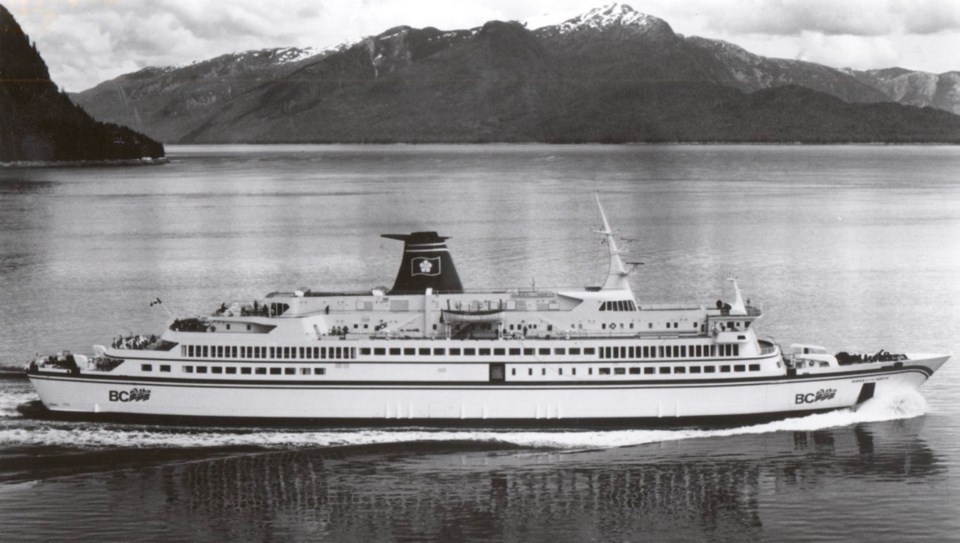VANCOUVER — A crucial navigation tool aboard a B.C. Ferries passenger vessel that sank seven years ago was commonly referred to by the ship’s crew as a “box of lies,” a defence lawyer said Tuesday during the trial of a crew member charged with criminal negligence causing the deaths of two passengers.
Nancy Adams outlined a series of concerns with equipment and training aboard the Queen of the North, which sank in March 2006, to support Karl Lilgert’s contention that he was poorly trained and using unreliable gear.
Lilgert was the senior officer on the bridge when the ship struck an island off the province’s northern coast. Gerald Foisy and Shirley Rosette were missing and presumed drowned.
Adams singled out a number of complaints from crew regarding a device known as an electronic chart system, which would display the ferry’s position on digital marine charts.
While cross-examining Ross Bowen, a senior officer who has been sailing with B.C. Ferries for more than 30 years, she said the device had a reputation for being unreliable.
“Are you familiar with the expression used by some people on the bridge that it was a “box of lies?’ ” asked Adams.
“No,” said Bowen. “I haven’t [heard that expression].”
The defence’s opening statement last week also referred to the electronic chart system, with lawyer Glen Orris telling the jury it was frequently inaccurate, at times placing the ship’s position over land as it was sailing along its route.
On Tuesday, Adams also described concerns among the crew that the device was too bright, especially at night when the glare made it difficult to see anything else in the darkness. That prompted some crew members to turn the brightness down on the screen to the point where it couldn’t be read at all, she said.
Bowen agreed the brightness was a persistent problem with the chart system. It prompted B.C. Ferries to order a new screen that could be adjusted, as well as a sheet of tinted plastic that could be placed over the screen to dim it even further.
“You were aware that it was used differently in different ships, and many people on your crew turned it almost off?” asked Adams. “I’m aware of that,” replied Bowen.
The electronic chart system will also form a key piece of evidence later on in the trial, as data recovered from the device will be used to plot the ship’s route the night of the sinking.
The Crown has said the data will show Lilgert missed a course correction shortly after midnight on March 22, 2006, and then took no evasive action as the ship sailed toward Gil Island.
Bowen said the device is no longer used on B.C. Ferries’ northern routes and has since been replaced with a newer system.
Adams noted the ship had just returned from five months of upgrades.
That work involved the installation of a new radar system and changes to the bridge that included a different switch to activate and deactivate the autopilot system.
Bowen told the jury there was no formal training to ensure crew members knew how to use the new equipment or testing to ensure they understood the new procedures for that equipment.
He said senior officers that were familiar with the new equipment would teach crew members, and those crew members would, in turn, show their colleagues.
Bowen also pointed out that a memo detailing the new autopilot procedures was posted on a wall in the bridge.
“It wasn’t really much of a different stretch from what we had before, so we wouldn’t be doing any testing,” he said.
“But if I talked to somebody or whoever the officer was talking to somebody and they felt they were comfortable with what they were provided, then you carried on.”
The trial has already heard that Lilgert was on the bridge with quartermaster Karen Bricker when the ship failed to make a left turn in a body of water known as Wright Sound. It was their first shift working alone together since they ended an intimate affair a couple of weeks earlier.
The ferry sailed in a straight line for more than 20 minutes without changing course or taking evasive actions to avoid Gil Island, the Crown has said.
The collision prompted a nighttime evacuation and rescue at sea. While 99 passengers and crew were saved, Foisy and Rosette were never seen again.
Lilgert pleaded not guilty and he is standing trial before a jury.



